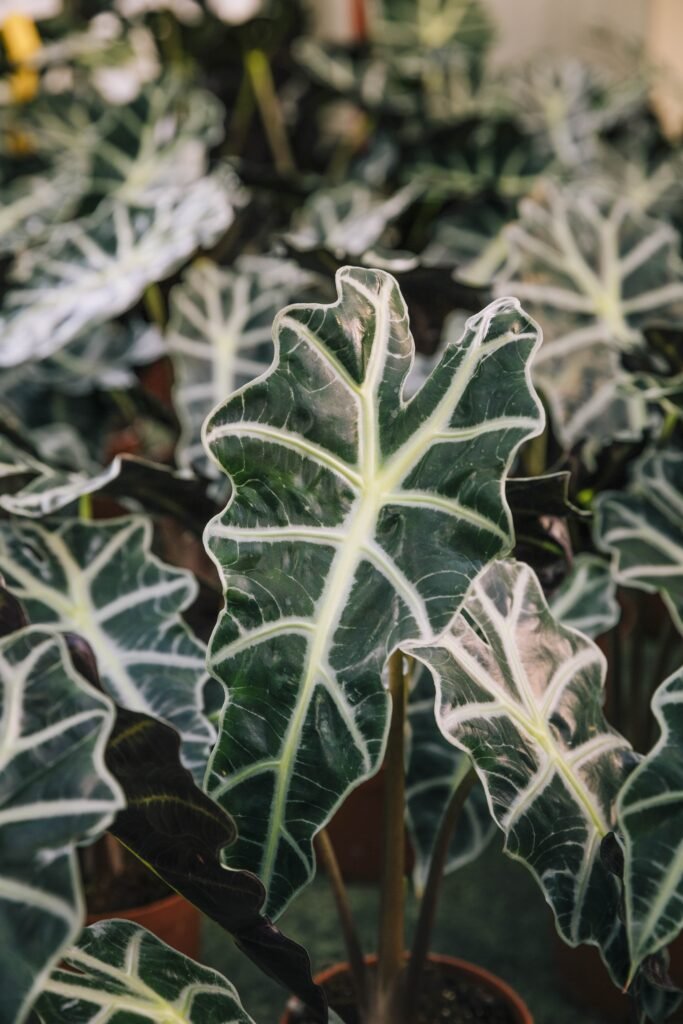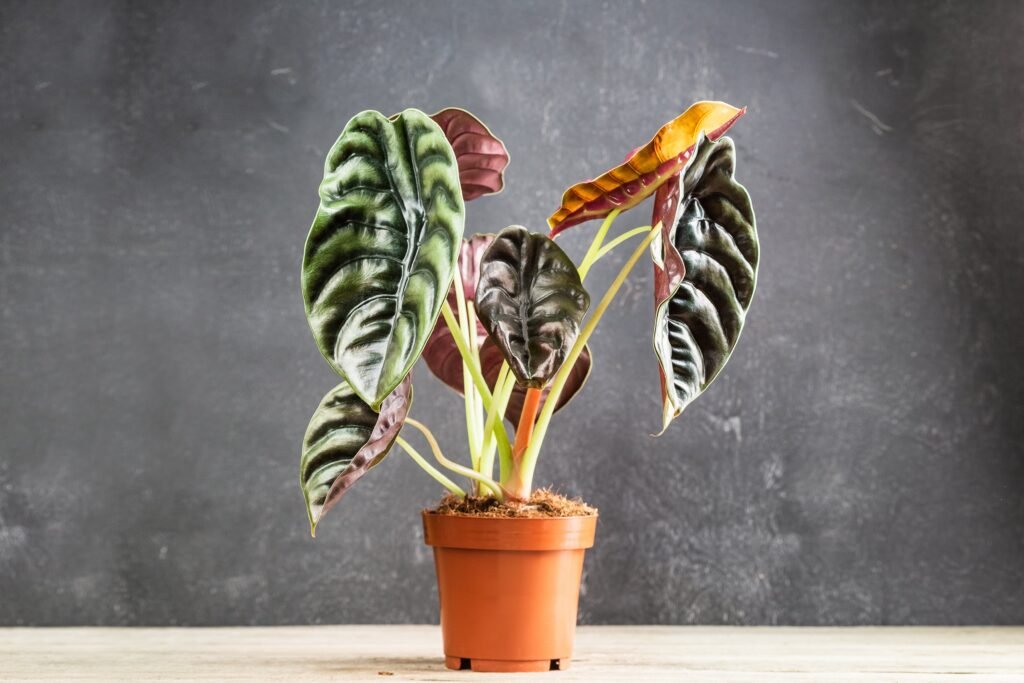ALOCASIA
- admin
- July 6, 2024
- Uncategorized
-
Post Views: 79
- 0
- lighting: Alocasia requires bright places, but protect the plant from direct sunlight during the day. It can grow in some half-shaded corners if only it is warm and humid enough for the plant.
- watering: Alocasia requires moisturized soil consistently (water the plant 3-4 times a week during hot season, in winter reduce the watering). Don’t keep it dry before next watering. When overwater the plant, it perspires extra moist away and some drops of water fall down from the foliage, as if it shows the rainy weather outside.
- fertilizing: starting from March through October feed Alocasia every two weeks. No need to feed it during cold season. Use organic fertilizer, or fertilizer with high content of potassium.
- humidity: Alocasia prefers the high level of air humidity, so if it is not enough, it is better to put the plant in the tray with moistened peddle stones. Spray the plant regularly.
- temperature: the temperature level for ideal growing is between 68-79°F. In winter the temperature should be not less than 64°F.
- repotting: repot Alocasia every 1-2 years or when it outgrows its current pot. Choose a pot that is 1-2 inches larger in diameter than the current one. The best time to repot is in the spring, just before the growing season begins. Use a well-draining, aerated potting mix. A mix of peat, perlite, and pine bark works well.







